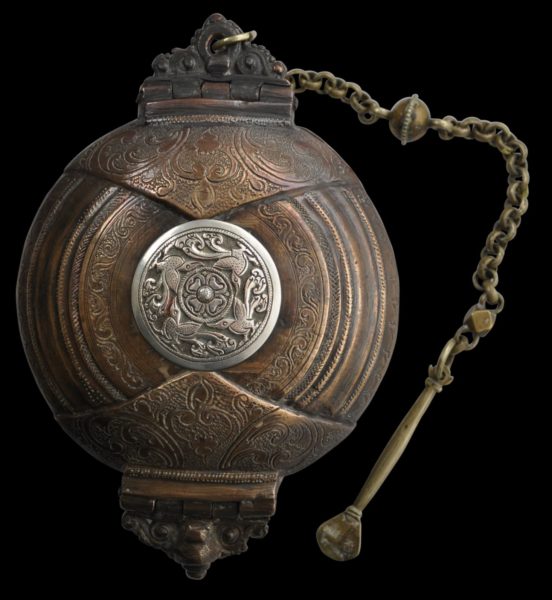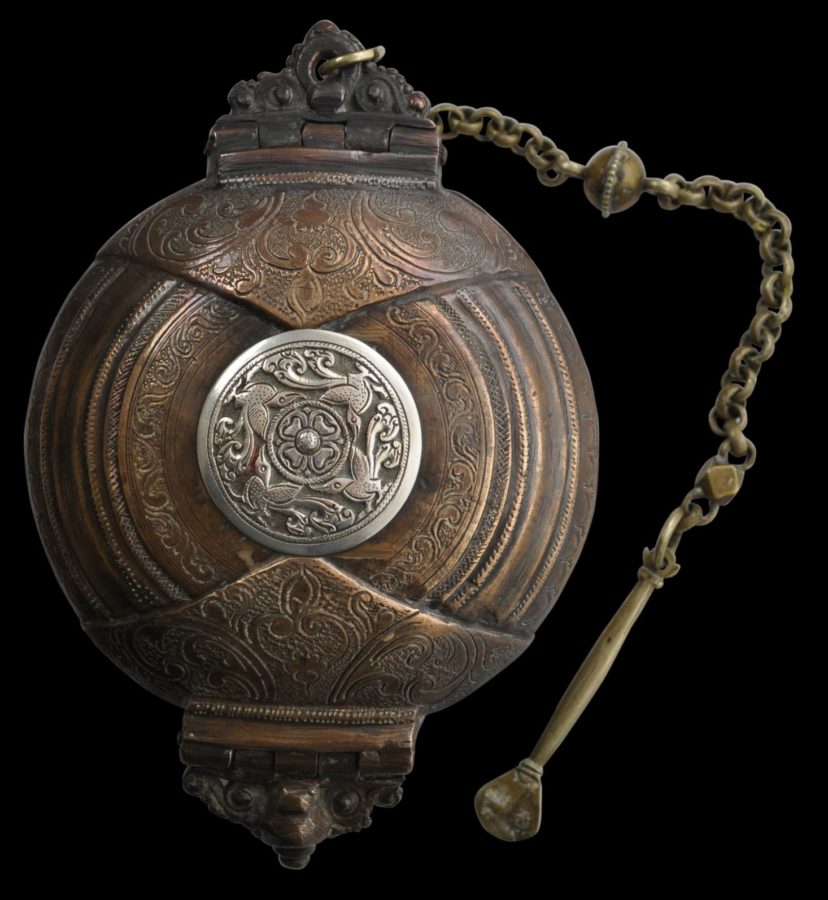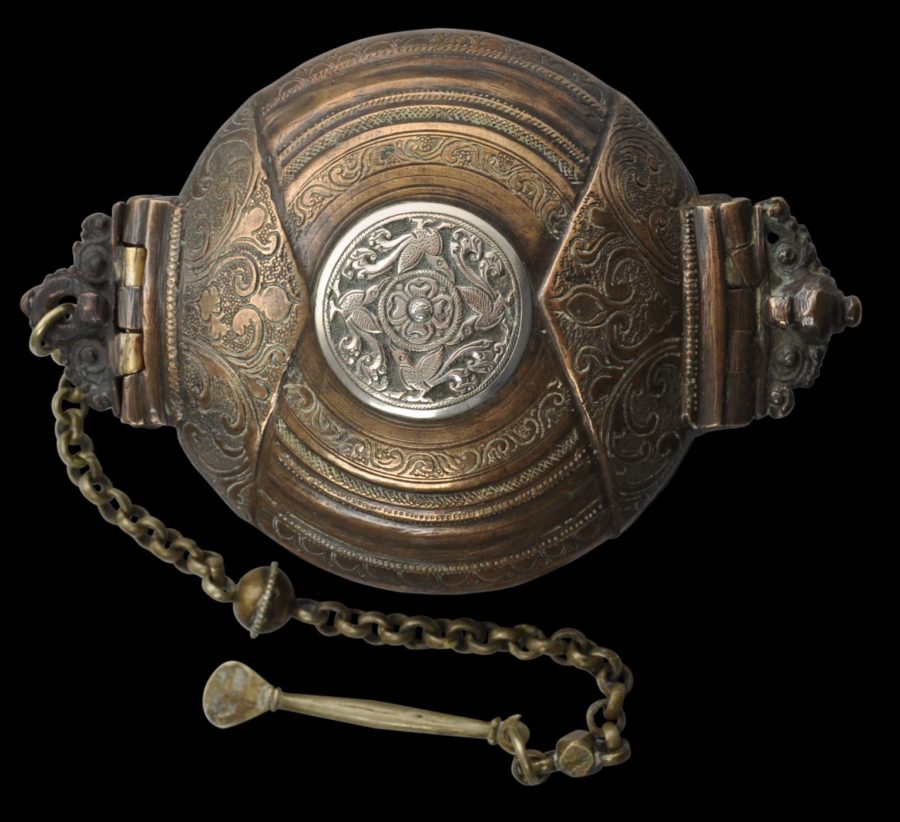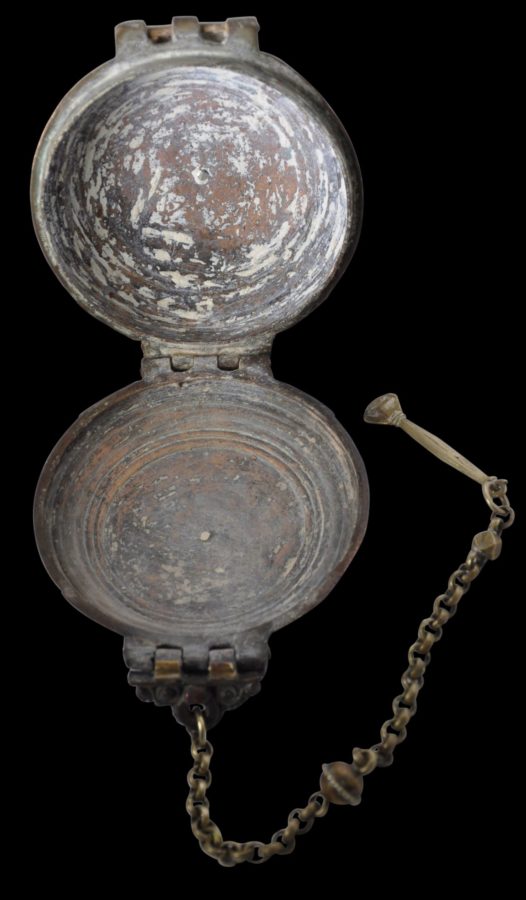This is an unusually large Sri Lankan lime container – it is about three times the size of a more typical example.
It is of round, flattened form, and of two hinged halves. It was used to hold and carry slaked lime (chunam) for mixing with sliced areca nut for betel chewing. On Sri Lanka, such lime boxes were known as a killotaya.
It is finely decorated on both sides with scrolling flower and petal motifs, and inset on both sides with round silver plaques each chased with four sacred swan (hamsa) motifs around a central flower motif.
Attached is a heavy brass chain with an attached spatula used from scraping the lime from the box and smearing it on the betel leaf, that wrapped around the betel quid.
The box flips open to reveal the contents; it has hinges on one side. The interior has remnants of powdered lime. (Powdered lime was obtained by crushing seashells and coral.)
The form is reminiscent of, and almost certainly was based on, a European gentleman’s pocket watch case, and like a watch case, would have been held in a pocket or cloth fold.
The chewing of betel, which was used as a mild social narcotic, was widespread across Sri Lanka. Almost every adult male and female on the island would have chewed it in the 18th and 19th centuries. Lime was an essential part of the betel quid. Hosts always offered visitors betel, but everyone was expected to bring their own lime because it was felt that poison could most readily be hidden in lime, so the practice evolved that lime would be carried to all meetings and events, thus necessitating the carrying of a portable lime containers such as this example.
The size of this example and the fact that it is inlaid with a precious metal – silver – suggests that it belonged to an important man, who needed to demonstrate that importance by the size of his lime container.
The example here is in fine condition. The walls are thick and the item is heavy for its size. The two halves close tightly.
References
Brownrigg, H., Betel Cutters from the Samuel Eilenberg Collection, Thames & Hudson, 1992.
Coomaraswamy, A.K., Mediaeval Sinhalese Art, Pantheon Books, 1956 reprint of the 1908 edition.
Treasures from India: The Clive Collection at Powis Castle, The National Trust, 1987.





